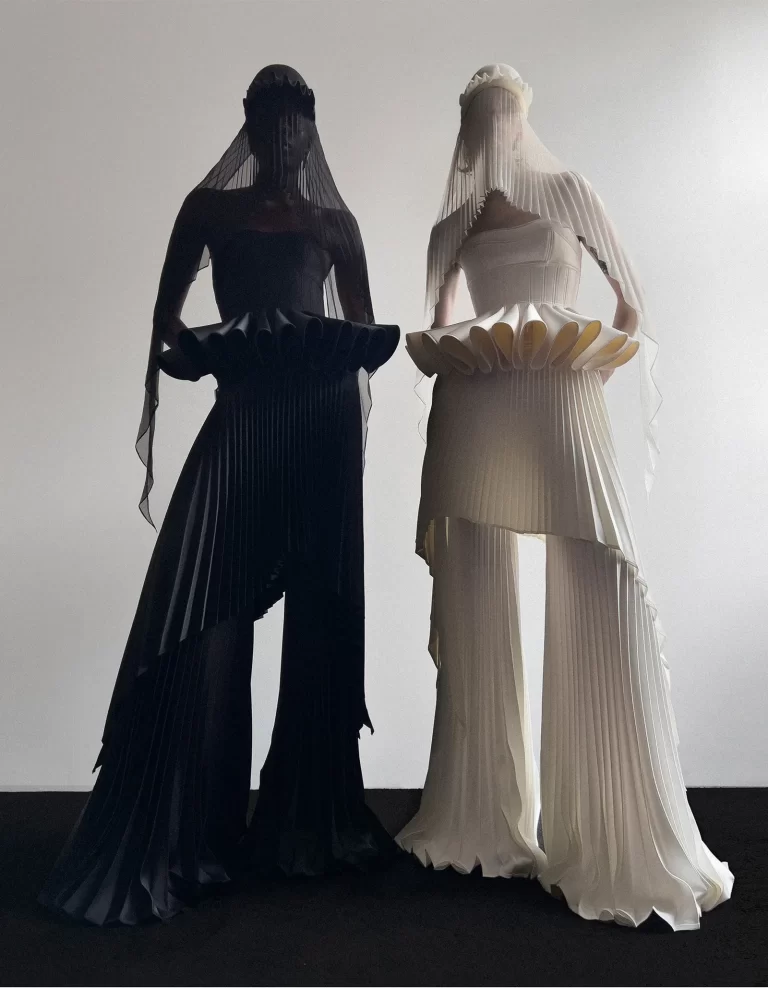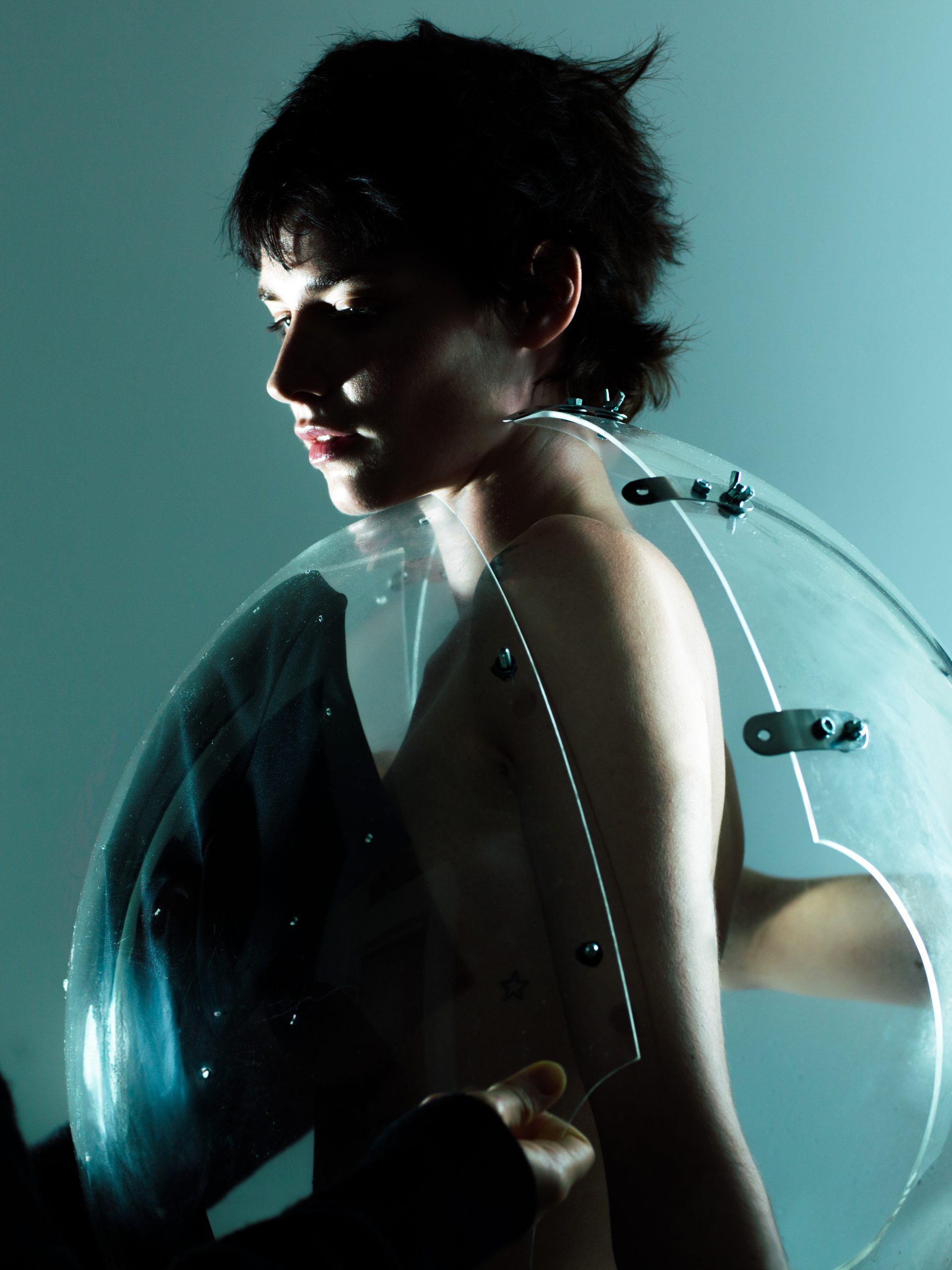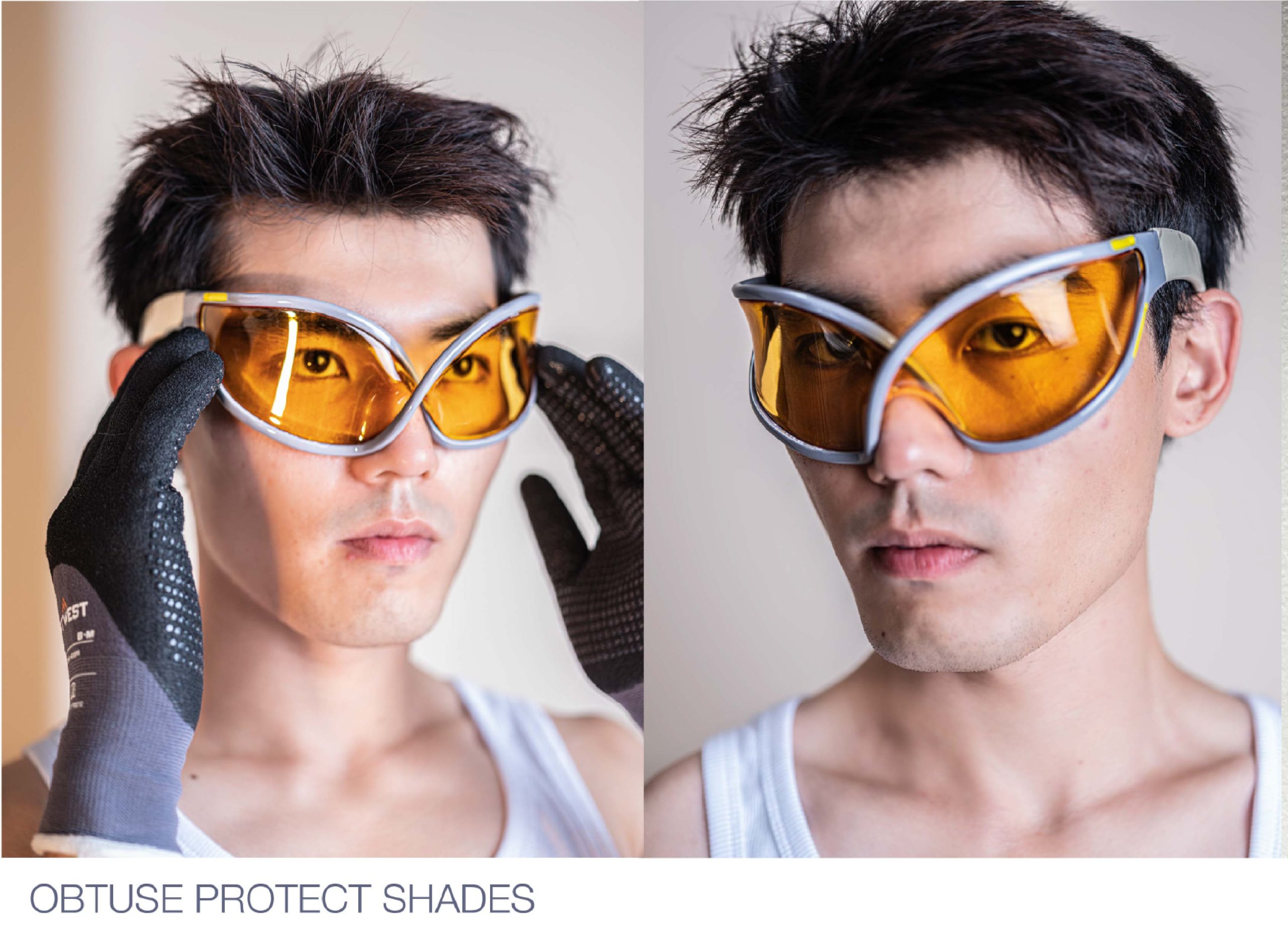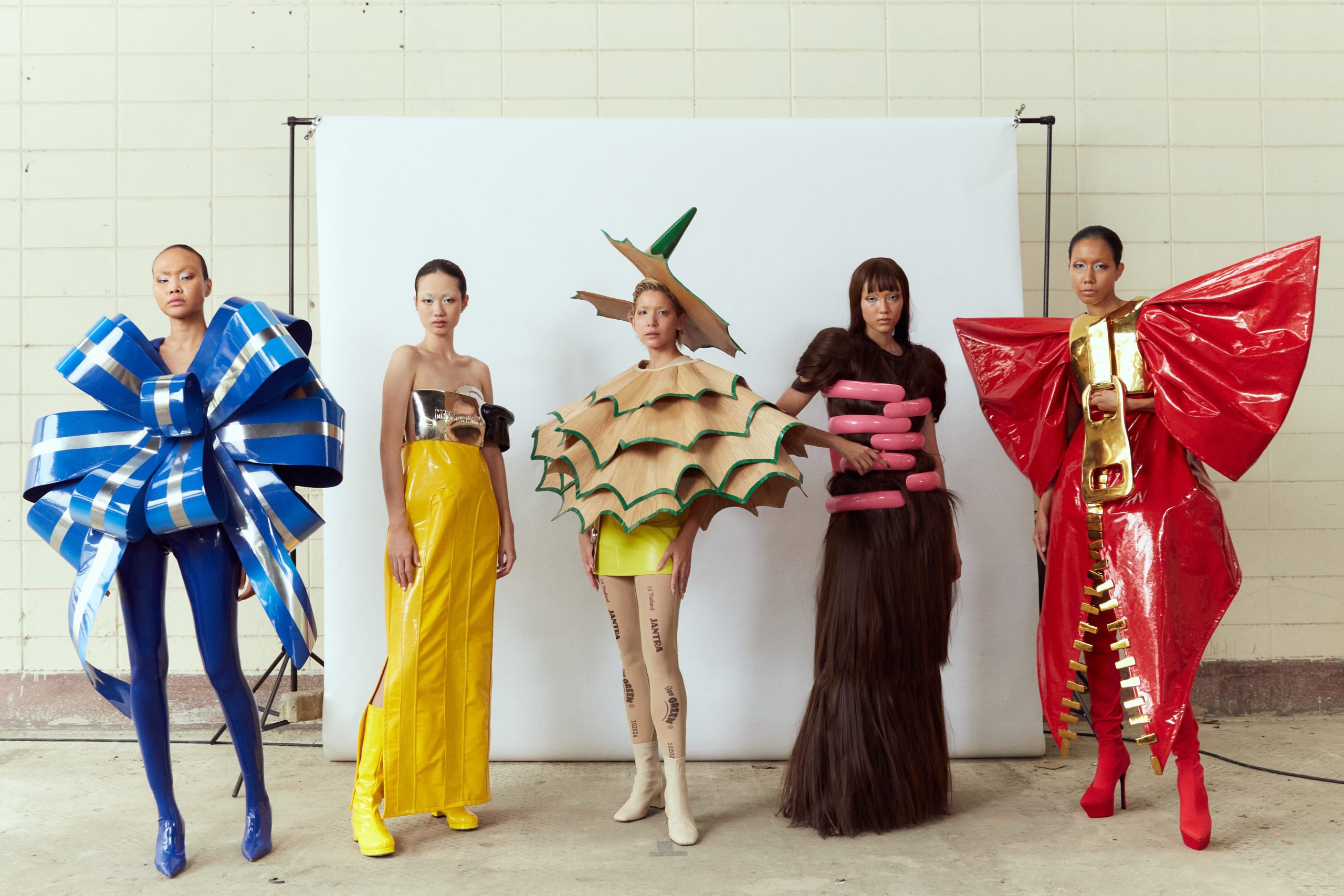The GLITCH team has been investigating the culture behind Fashion Week. In the first segment, Fashion Week Stunting, It’s All About The Instagrammers, GLITCH looked at how far brands will go to become viral on social media and asked if brands can maintain authenticity while trying to gain media coverage in fashion week shows. In this segment, we are looking into the consumer, the role of fashion criticism, the creativity crisis, and brands doing it right. We tapped High Fashion Twitter to contribute to our inquiry, asking if brands can create inspired designs when trying to profit economically.
The Role of Fashion Criticism
The major dilemma fashion journalists have at Fashion Week events is the role of criticism. The media is often controlled by paid partnerships, big conglomerate groups, and advertising deals, meaning that individuals aren’t able to write freely about a collection. With the competitive landscape of media, fashion journalism, and fashion public relations are economically dependent on each other. PR provides secure exclusive stories and journalists are invited to key events. It is an odd relationship, where fashion critics can be blacklisted from shows if they speak badly about the brand, which takes away a critic’s ability to write truthful reviews about a collection. The role of a critic should be to provide feedback —whether good or bad— to offer insight into the tailoring, craftsmanship, colour palette, mood, and historical context of a collection, which leads to the reader feeling like certain collection reviews are simply press releases devoid of insight and perspective.
The rise of social media has led to the democratisation of opinions, through different channels. High Fashion Twitter (HTF) is a great hub for organic expression and exchange about shows and collections. The open environment means that individuals can challenge each other’s thoughts about fashion, yet remain a positive group of like-minded individuals connected by their curiosity, love of fashion, and ability to critique the industry freely from the outside. We asked Chloe Iris Kennedy and Linda Sumbu from HFT why they love fashion.
@chloeikennedy
“I love using the language of fashion to navigate sociopolitical issues. Fashion is intrinsically linked to culture, for the better and for the worse. Having an understanding of fashion, and the minds who created it, introduces you to different cultures and worldviews. Also understanding how fashion is used as a political soft power helps you see systemic issues that are too often overlooked.”
@itgirlenergy
“I’m an artist so while I find fashion beautiful to look at, I also love what can be interpreted based of the various elements that a look has. Fashion can often be full of story, full of representation whether it’s the way that a pattern has been produced or the fabric that is used for a garment, or the styling of the clothes. It’s my favourite (and arguably the biggest) outlet for self-expression – there’s so much that you can tell with clothing that can also tell your personal story.”
The Creativity Crisis
A big issue for the brand and designers is trying to balance creativity, whilst keeping up with a trend cycle. Most high fashion brands release 5-6 collections a year for Fall, Winter, Spring, Summer, and Resort. They also show at fashion weeks twice a week. Is it possible to stay creative while trying to maintain sales?
“I don’t think it is impossible to be creative in a profit-driven industry, but I think it is significantly harder. Obviously, you can resist the rapid trend cycle by skipping seasons, but this also negatively impacts smaller independent brands who have to keep up with the industry financially and creatively.” Chloe Iris Kennedy tells GLITCH. “Although I would love to see an end to the trend cycle entirely, I think the most feasible thing to solve the creativity problem while still being able to financially sustain yourself in this industry is to produce less. There is no reason for a collection to have 70+ looks. Capsule collections with 15-25 looks are perfectly fine.”
There also comes the issue of brand heritage and legacy brands including Chanel, Louis Vuitton, Hermès, and Prada, who are often criticised for being too different from their legacy or too safe.
“I’ve always thought that many have an over-reliance on nostalgia as well as an over-reliance on their loyal audience. They are very aware that they are representative of what many deem as luxury in fashion, and thus often rehash many designs every season or pull from the archives, as the name, quality, and consistency makes them comfortable for consumers to purchase from. This isn’t necessarily a bad thing, some may even call view this as a way to combat the emergence of new trends which then leads into another cycle of overconsumption, but I also think that it then leaves us with many new visions and stories for these brands remaining untold for the sake of profit.”
LG adds.. From an artistic standpoint, I view this as a shame. From a business standpoint, it makes logical sense. I think there probably is a median where brands can create new, exciting, and innovative clothing that is comfortable and consistent every season, but I’d assume it would be quite difficult. People like fashion they can wear consistently, and fads wear out over time.”
Another issue that brands face is the historical context of the time they are creating inside. For example, Can you really be punk brand without speaking about the political climate today? And, when heritage brands slip into the mainstream, do they have to widen their reach creatively?
We asked Chloe Iris Kennedy and Linda Sumbu their thoughts on brands with a lost consumer.
@chloeikennedy
“I think most major fashion brands have lost their identity. The entire concept of a “heritage house” seems reliant on it. Having a designer who isn’t the creator of the brand isn’t inherently bad, but it also makes maintaining a singular brand identity nearly impossible. Think about the transition at Gucci from Tom Ford to Frida Giannini to Alessandro Michele to now Sabato De Sarno. I like a lot of the work they’ve done as individuals, but when you look at it all at once it is hard to pinpoint what exactly Gucci “is.” – Chloe Iris Kennedy
@itgirlenergy
“I think some brands that have lost their brand identity are Lanvin and at some point, I think Gucci did. They (Gucci) definitely came back to their roots, but at some point after Michele’s departure, I wasn’t really sure who they were. With Lanvin, I’m still not sure. They haven’t had a very noticeable brand identity in a while.”
Brands doing it right
The relationship between traditional fashion spokespersons and consumers is changing. In 2015 the Victoria and Albert Museum did an exhibition, called “What is luxury?” which aimed to redefine luxury in the contemporary age and highlight how anyone should be able to learn and educate themselves about luxury items, without having to purchase them. “Luxury is shifting to something that is not simply focused on consumption, and this has implications for future craft — exciting implications, I think.” Jana Scholze, the co-curator of the exhibition said “Craft in luxury is about making something that is so unique it can only be made one time, and, perhaps even more, appreciating the passion and endless obsession of these makers.” The “What is luxury?” was a very refreshing exhibition opening a discussion through the lens of loving an art form, without needing to buy it, challenging historical views that you must own something to be able to comment on it. Sometimes appreciating fashion is more about admiring the craftmanship that went into making it and the emotions of looking at it, rather than needing to buy it and own it as a commodity, hiding it from the world to see and appreciate.
Now not all brands have a lost consumer, some are doing it right. The Lyst Index declared it was Miu Miu’s moment this year. The fun and playful little sister of Prada, under the creative direction of Miuccia Prada, reached over 223 million views on TikTok. The Miu Miu cashmere cardigan is the 2nd hottest product according to the Lyst Index, which describes the “halo effect” for the cardigan category, with searches up by 44%. The creative projects of the brand correlate to the success of the brand. Their Fall/Winter campaign starring Emma Corrin, Ethel Cain, and Zaya Wade, led to high traffic on socials. The brand launched Mui Miu’s Women’s Tales, a series of short films by notable women filmmakers including Agnès Varda, Ava DuVernay, and Naomi Kawase who depict a feminine love affair with Miu Miu, and the complexities and contradiction of being a woman. The brand also creates Miu Miu Select, where important friends of the brand are invited to create a selection of garments and accessories from the new collection. It is clear that Miu Miu is designing with its consumers in mind, and it is reflected in Miu Miu’s sales rising by 50% year-on-year.
We asked Chloe Iris Kennedy and Linda Sumbu their thoughts on fashion brands that are art forms.
@chloeikennedy
“My friend Sofía has a knitwear brand called Nana Studioz. All of the collections revolve around personal identity and introspection. They have a very close relationship with their customers, so everything feels very community-led but also very personal. Lemáine is another great one, they refer to their work as “haute macabre” because they make hyperrealistic pieces that look like flesh. It’s super innovative, I’ve never seen anything quite like it.”
@itgirlenergy
“Schiaparelli, Robert Wun, and Dilara Findikoglu are my favourite brands that are definitely representative as fashion as an art form. Analysing every part of their collections and seeing the meaning behind every accessory, every drape, and even the styling of the models on the runway is a total treat for an art nerd like me.” –Linda Sumbu.
There is a creativity crisis for many legacy and heritage brands, that have forgotten about their consumer. The fashion system means many journalists might not be commenting on this due to fear of not being invited to show and, thus unable to do their jobs. While it is subjective our many takeaways of brands that are doing it right are the ones that can speak to their consumer and create inspired campaigns. The results can be witnessed through sales, but more importantly by individuals looking and feeling inspired by the brand and sometimes it is beautiful to be able to look at an item of clothing and respect it as an art form, without having to own it. In the next part of the GLITCH fashion culture debunked series, we will be looking into the model POV at Fashion Week.
Written by Amber Weir from GLITCH Magazine





